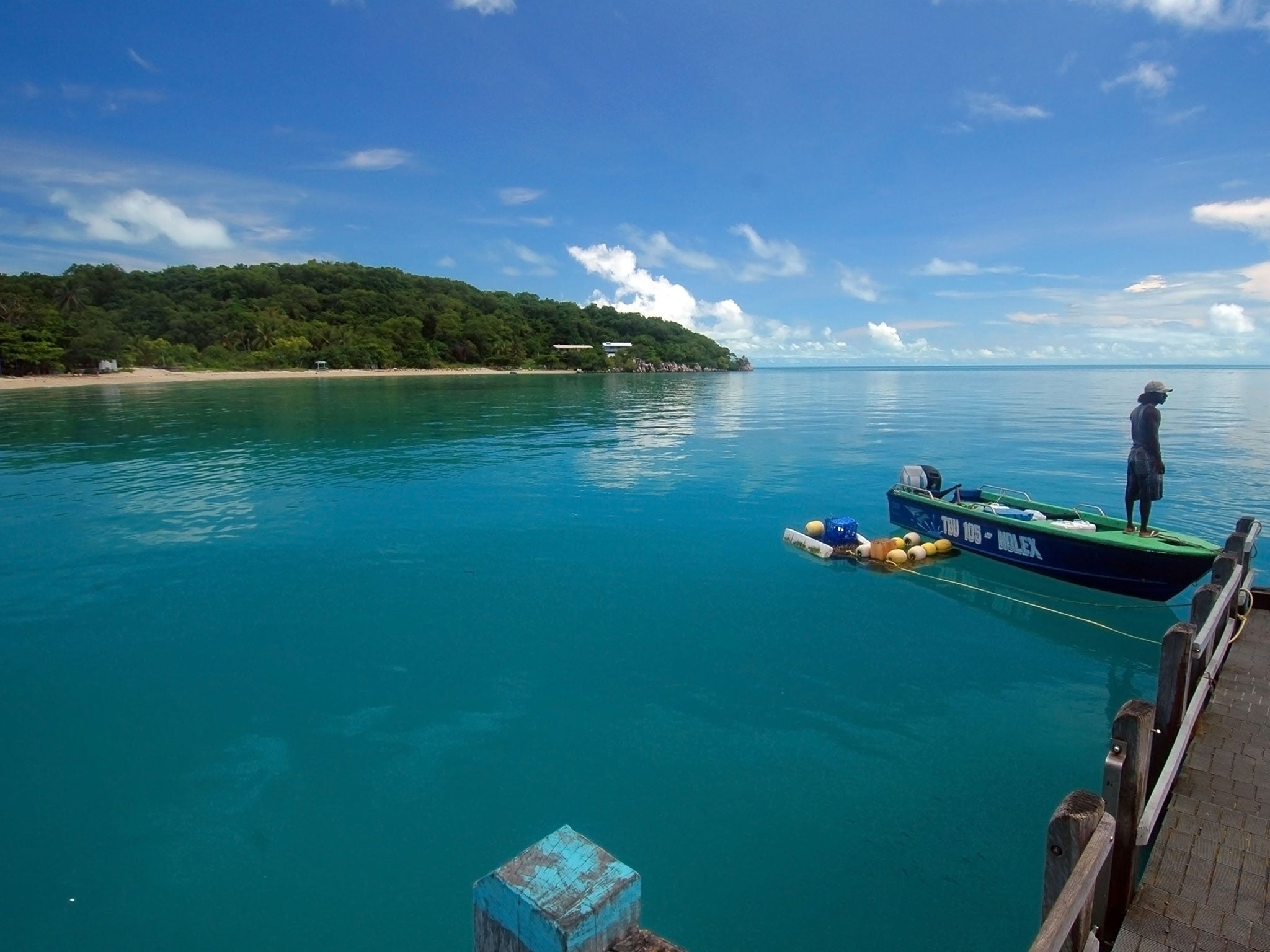Forgotten plight of Australia’s Torres Strait islanders: their land is being swallowed by rising sea
Hundreds of people may be forced to abandon homes where their families have lived for generations

The islands which dot the sparkling waters of the Torres Strait, off the far north-east of Australia, were the birthplace of indigenous land rights. In 1992, five islanders led by Eddie Mabo won a landmark High Court case which erased the notion that Australia was unoccupied when the British arrived. But more than two decades on, the land for which they fought is being swallowed by the sea.
The low-lying islands – some of them closer to Papua New Guinea than the Australian mainland – are at risk of becoming uninhabitable as a result of rising seas, a report warned today. In the coming decades, hundreds of people may be forced to abandon homes where their families have lived for generations.
Yet the threat seems barely to register in Canberra, which only recently – after years of lobbying by the islanders – released funds for the repair of seawalls on Saibai and Boigu, two of the worst affected communities.
The region is facing a similar challenge to South Pacific nations such as Kiribati and Tuvalu. But while the plight of such countries is well known, few people outside Australia have heard of the Torres Strait. Many Australians would have difficulty locating it on the map; the remote area – accessible only by light plane – receives few visitors.
The report, by the Torres Strait Regional Authority (TSRA), says “even small increases in sea level due to climate change will have an immense impact on Torres Strait communities, potentially threatening their viability”. The threat to the 20-odd populated islands “needs to be fully appreciated by governments”, it adds.
Already, communities are experiencing abnormally high king tides, which flood homes, roads and graveyards. The tides, often accompanied by storm surges, cause erosion and poison gardens where locals grow root crops.
The Torres Strait Islanders, who have more in common with the Melanesians of Papua New Guinea than Aborigines on the Australian mainland, are a resourceful bunch. However, the report makes clear that more funds are needed. “They’re pretty adaptable,” said Donna Green, a climate change scientist who has worked in the area. “But at some point, if you don’t have the financial or human resources, you become vulnerable, and they’re already feeling pretty stretched.” The sea walls, she added, were a short-term fix.
Some of the islands are granite or volcanic, encompassing higher land to which locals could, theoretically, relocate. But six are low-lying coral cays or swampy mud islands. On Saibai, for instance, residents are squeezed into a narrow strip between the ocean and a swamp. They have already sandbagged their families’ burial plots.
The prospect of relocation is not one which people like to contemplate. Joseph Elu, chairman of the TSRA, told ABC radio that they were unsure whether to try to adapt or accept an unpalatable reality. “The biggest question is, what do people want to do with their lives? Is it good being resilient, or are we trying to stand in front of something that will wash over us any time?”
Subscribe to Independent Premium to bookmark this article
Want to bookmark your favourite articles and stories to read or reference later? Start your Independent Premium subscription today.

Join our commenting forum
Join thought-provoking conversations, follow other Independent readers and see their replies